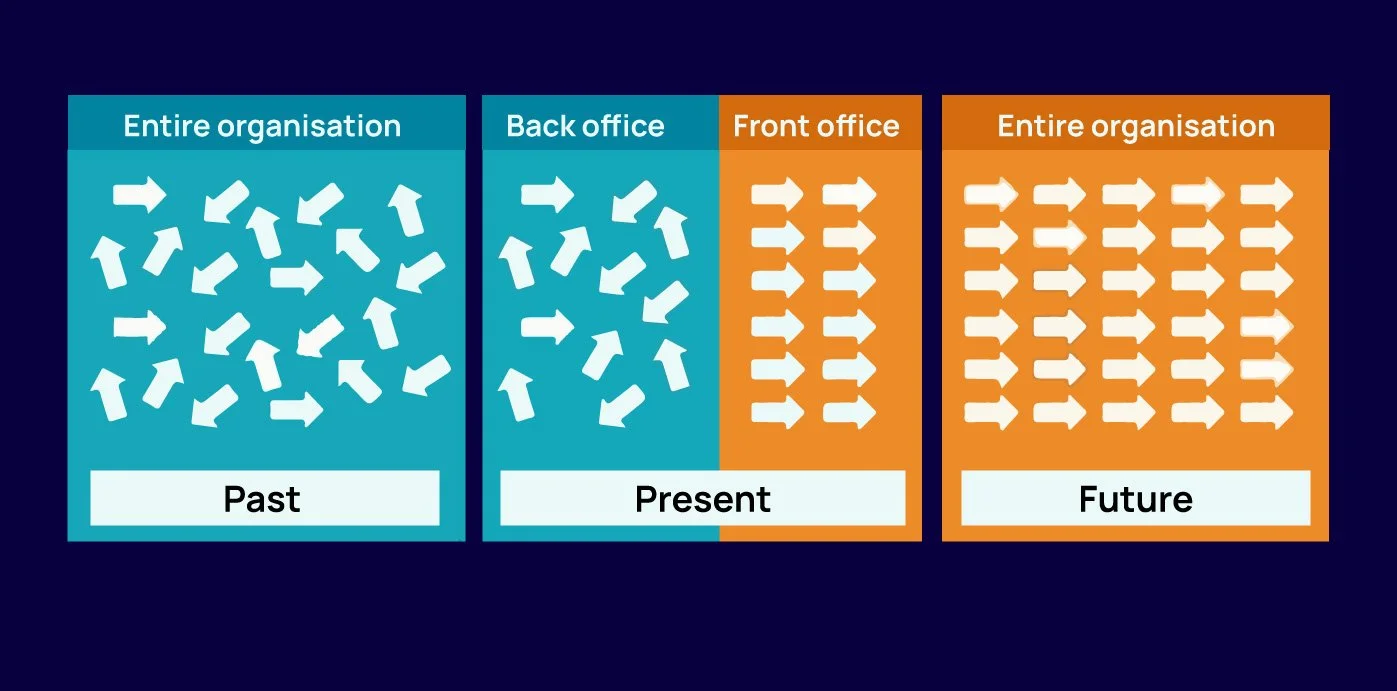3 ways of ensuring that your customer experience is not simply an organisational veneer
The term Customer Experience has been in common use since 1999 when Pine and Gilmore first talked about it in their book, The Experience Economy. Although its definition has moved around a little in the intervening period, Customer Experience has for sometime been considered the undisputed battleground for brands in the 21st century. Back in 2005, The CRM pioneers Peppers & Rogers, called it ‘the single most important aspect in achieving success’.
As our understanding of its importance has increased, so has our ability to define, measure and manage Customer Experiences that differentiate brands, build customer advocacy and improve financial performance.
We’ve known for a long time how to recruit, train and manage customer facing people to deliver excellent experiences. What is often less well considered and understood is the need to ensure that the people, processes and systems that support customer facing people and customer journey touch-points are also fully aligned.
Too many organisations exist in what can be considered a ‘1G Customer Experience’ phase where only their customer facing, front office people are deployed, managed and targeted towards the delivery of unique Customer Experiences. The efforts of these people are frequently undermined by the misalignment of the remainder of the organisation. They are simply a shiny veneer on a block of chipboard.
Misalignment between front and back offices causes both external and internal harm. External customers will receive disappointing experiences, their expectations will be failed and, in the age of social media, they will tell others about their disappointment too. Your organisation will fail to differentiate itself from its competitors and the return on your brand investment will be diminished. Internally, the morale of your front line staff will be damaged as their efforts to deliver an excellent customer experience are undermined by struggles with their colleagues, your processes, systems and tools. At best, their effectiveness will be reduced; at worst, they will leave. It’s a lose-lose all round.
Examples of this debilitating lack of alignment can be found everywhere. In the B2B environment, we see highly skilled and motivated sales professionals consistently let down by factories that cannot turn around quotes quickly or meet manufacturing deadlines. In the Travel sector, we see buyers specifying and buying product without understanding the experience their brand is aiming to deliver. In the utilities sector, we see engineering divisions continually failing to meet the customer promises set out in expensive brand advertising.
In our work, we have identified three very simple but very important principles that can ensure your customer experience is a 2G Customer Experience i.e. a solid block of wood rather than just a length of chipboard and veneer.
1. Ensure your whole organisation understands your Customer Experience
Every member of your organisation from front to back – and the third parties working with you – must fully understand the Customer Experience your endeavouring to deliver. They must understand what it is, why it is so important and why it is relevant to them. The methods of dissemination will vary but, as with any culture and change programme, it is vital that the message is consistent and repeated. It is all too easy for people without direct customer contact to slip back in to an ‘inside out’ view of the world.
2. Apply the principles of LEAN manufacturing to your internal processes
Whilst LEAN was developed to systematically eliminate waste from manufacturing processes, its principles can very effectively be applied to the development and improvement of the Customer Experience i.e. why are we doing it this way if it doesn’t benefit the customer and it inhibits the Customer Experience?
By mapping the customer journey, the discrete processes, activities and tasks that contribute to each stage and touchpoint can be identified and isolated. By then working with their owners in a cross-functional format, it is possible to identify and re-engineer all those elements that do not support the Customer Experience. This process will inevitably include people, teams and activities that are not directly customer facing. It will also identify the internal barriers such as lack of customer insight, insufficient expertise, incorrect tools, contradictory goals, inadequate systems, etc.
3. Use the correct measurements. NPS is not a panacea
We talked at some length about measurement of the Customer Experience in our article
‘5 reasons to look beyond the Net Promoter Score’. In it we laid out belief that no single measurement can be used to properly measure the Customer Experience.
Whichever measures are chosen, they must also be made visible to the non-customer facing elements of the organisation. More than that, they should also be included in their targets and remuneration. This helps embed the cross-functional communications and operations necessary to keep a solid Customer Experience on track.

